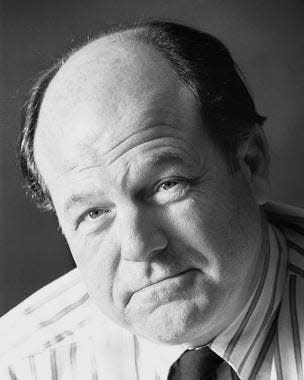Ghost stories are an annual Halloween treat

The Halloween season once again is upon us.
Over the years, the people of Columbus and central Ohio have celebrated the season in a variety of ways, not the least of which is children in costume going door-to-door saying “trick or treat.”
This usually results in the children and their chaperones returning home with bags, baskets or pockets full of candy and other treats. In recent years, the person who did not yield a treat doesn't really get tricked that much. A century ago, and for several decades before that, the failure or inability to treat often resulted in a trick.
Older children and adults often celebrated then, and some still do today, with a party featuring appropriate decorations and refreshments. The neighborhood parties sometimes saw people playing games such as bobbing for apples floating in a tin tub or having a contest to see who could carve the most creative face on a pumpkin. Sometimes the rug would be rolled back in the living room or parlor, and music and dancing would follow. Other people simply enjoyed the company and told stories one to another of the Halloween celebrations from their youth.
Many of the stories were ghost stories.
Columbus, like most towns, has seen the telling of a number of ghost stories. Virtually every older neighborhood – and some not so old – has a story or two about a ghost in the area. Sometimes the ghost can be seen. In many cases, the presence of something or someone unusual is sensed only by strange sounds or scents in the air. Many stories of odd occurrences remain the subject of neighborhood gossip or legend.
Some of the stories have become more widely told.
Here are a couple of favorites. But first it should be acknowledged with some agreement with the old poem that runs something like, “I have never seen a ghost, I never hope to see one; but oh, my foes and oh my friends, I would rather see than be one!”
One of the best-known ghost sites in Columbus is Kelton House, now a museum and garden on East Town Street.
Fernando Cortez Kelton came to Columbus as a young man, made his money in the retail trade and soon was looking for a place to build a house for his wife and family. In 1852, he astonished his friends by buying a lot that was then “way out in the country.” It was four blocks from the Statehouse.
The house was substantial and built in a formal style. It served as the home of the Kelton family for several generations. But Fernando’s time in the house was limited. His son, Oscar, served as a soldier in the Civil War and was killed in battle in the South. Fernando rented a wagon and driver and set out to retrieve his son and bring him home.
During that trip, Fernando fell and severely bumped his head. Returning to Columbus, he buried his son and went back to work. A short time later, he was leaning out of a third-story window of his office in Columbus. He had a dizzy spell and fell three stories to the street. After several days, he died in his bed at his Town Street home.
The Kelton family lived in the house until 1975, when it passed to the Junior League and became the museum that it is today. You can tour the house and see Fernando’s bedroom. Just do not close the bedroom door ‒ no matter how firmly it is latched, the door will open on its own when you aren't looking.
It has been doing that since Fernando died. Apparently, he likes an open door.
Other ghosts are a bit more visible. John Kerr was one of the four proprietors who founded Columbus in 1812. Kerr was a successful surveyor and land developer and was quite wealthy when he died of fever in 1823. He was buried in the Old North Graveyard. When that graveyard was abandoned in the 1870s, many of the hundreds of people buried there were moved to another cemetery. John Kerr was not among them. His grave was lost.
A man dressed in the clothing of the early 1800s has been seen from time to time in the fog near the North Market, which replaced the graveyard. When approached, he vanishes into the mist. It might be Kerr, the second mayor of Columbus. Then again, it might be Jarvis Pike, the first mayor of Columbus, whose grave also was lost. Or it just might just be some fellow who likes to wander in the mist.
And a happy Halloween to one and all.
Local historian and author Ed Lentz writes the As It Were column for ThisWeek Community News and The Columbus Dispatch.
This article originally appeared on The Columbus Dispatch: Ghost stories always give Columbus residents a thrill
